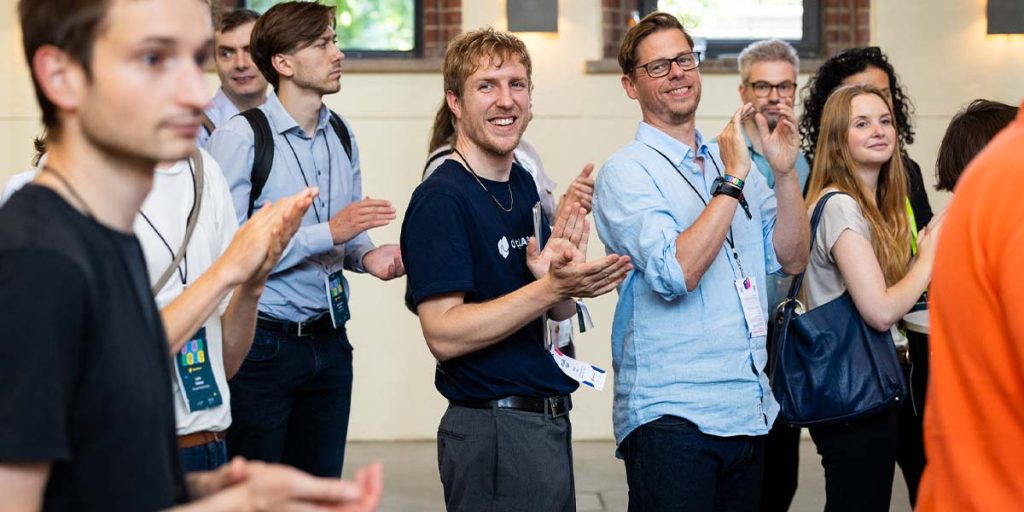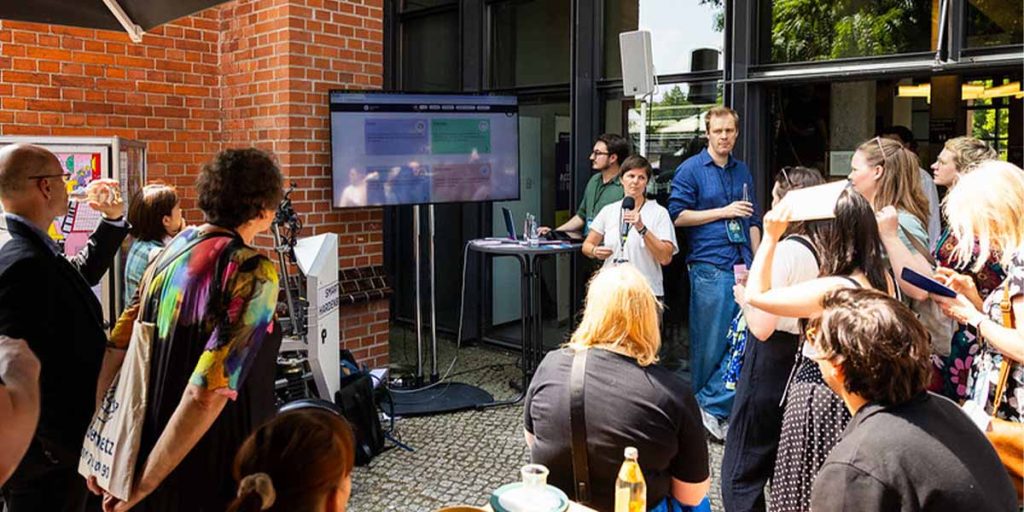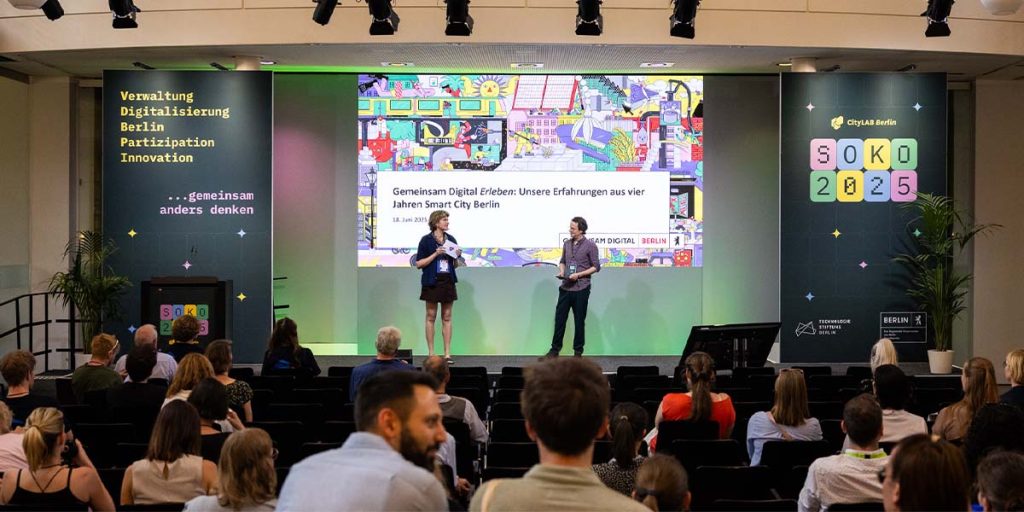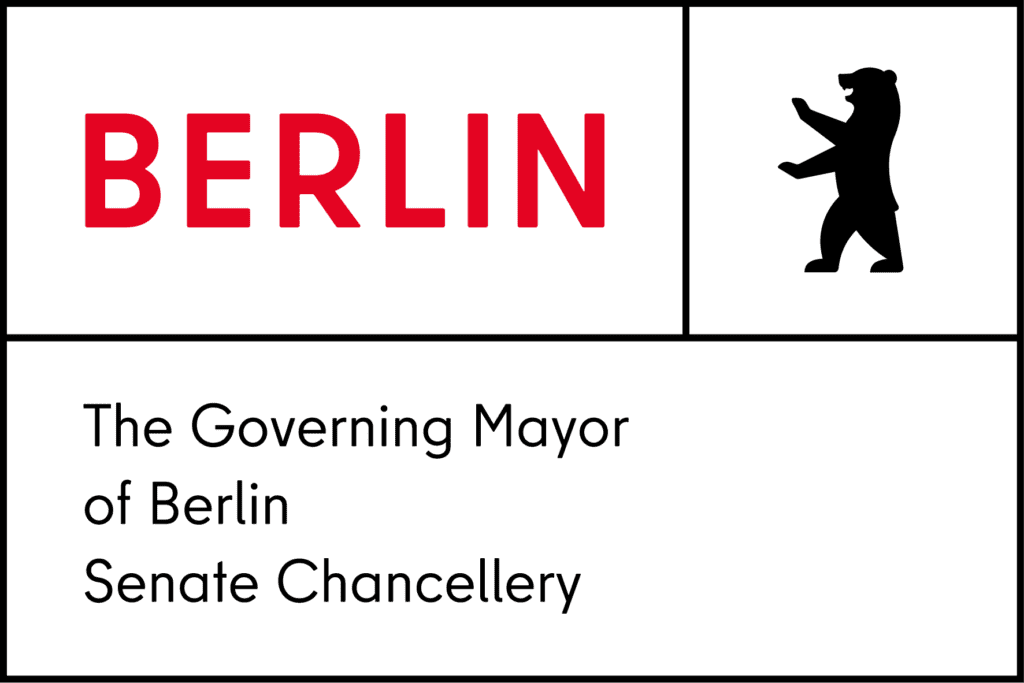The Smart City and Digital Strategy Gemeinsam Digital: Berlin (GD:B), developed in the context of the MPSC, is deliberately designed as a learning process – and thus stands out from other strategies. These usually focus on goals that are then pursued over a period of years – without being able to take changing conditions into account. In dynamic areas such as digitalisation and urban development in particular, this can lead to strategies becoming out of touch with reality over time. GD:B attempts to mitigate this risk with a flexible approach that focuses on feedback, further development and adaptation – and makes learning a fundamental principle.
A joint team from the Senate Chancellery, the Smart City Unit of Berlin Partner and CityLAB Berlin regularly discusses the pilot measures of the GD:B strategy and evaluates which activities work and are ‘effective’ and, above all, which are not. In scientific terms, this would be referred to as learning-centred evaluation. This can yield insights at various levels: insights into how we work, what issues we should address, and also how the learning process itself can be improved.
In this article, we will attempt to illustrate this using three specific insights that we gathered in 2024 through a major retrospective (regular project or process review).

Insight 1: Communities can do more!
Communities are more than the sum of their parts – we have seen this repeatedly in recent years. In addition to an agile and needs-oriented implementation model for carrying out the measures and a thematic framework, GD:B also provides the action teams with a forum for networking. In this forum, the GD:B community, there is a sense of community for transformation and an open, supportive atmosphere. Regular community meetings are held to exchange requests for support or offers of assistance and to work out solutions. The topics range from impact measurement to open source in IT procurement to scaling and sustaining the measures themselves. At the GD:B annual conference in the Rotes Rathaus, which also brings together all those interested in smart cities who are not directly involved in strategy implementation, we provide additional expert input on these topics. Word is getting around: GD:B has become a network for transformation and digital topics that is visible even beyond smart city issues.
At the same time, a community needs someone to take care of both building and maintaining it, and that costs resources. Meetings need to be organised and moderated, documentation needs to be written and circulated. Joint activities that cannot be immediately translated into project results often need to be particularly well justified. Nevertheless, we are convinced that the effort is worthwhile and will have an impact beyond the initial implementation phase.

Insight 2: Implementation models help – feedback loops with the project teams make them even better
The implementation model for the measures developed in the course of strategy development defines processes that enable the teams to work iteratively and in a needs-oriented manner within the project. Agile principles such as strong user orientation, prototypical approaches, and continuous improvement and scaling as integral parts of the project quickly lead to visible, usable results – usually more effective than project plans designed on the drawing board that are stubbornly followed to the letter.
At the same time, such an implementation model is not particularly low-threshold. Implementation teams that are encountering agile project management for the first time need to be brought on board. If models that are actually intended to provide help are themselves perceived as complex, their positive influence is lost in the worst case. This also means additional effort. In addition to accompanying workshops, CityLAB’s support services also offer space for feedback, which is incorporated and taken into account in the implementation support, e.g. by revising the materials (e.g. whiteboard templates, guidelines). The aim is to communicate the underlying ideals, such as user centricity, to teams that do not have a design or IT background. An ‘aha’ moment that flows into the revisions and new developments of the support materials: even simpler wording, less text and a special eye for coherence and consistency in the sequence and use of terminology.

Insight 3: Smart cities should be citizen-centric
As most stakeholders now realise, smart cities are not a topic that concerns citizens in their everyday lives. This is partly due to the complex technical issues involved in this area, and partly because good, functioning technology is, at best, invisible. It is visible when there are problems. This is compounded by the fact that attempts to find a uniform definition of smart cities have so far been unsuccessful. Another reason is that so-called smart cities often do not operate in close proximity to citizens. Berlin stands out positively in this regard. Within the framework of GD:B, successful support services are available for groups that are less digitally savvy: the Senior Citizens’ Network, which successfully provides information about services for older people, and the Digital Zebra’s Digitallots, who are now deployed in numerous state libraries and answer questions from anyone who needs assistance. The Kiezlabor is another measure that visibly implements the CityLAB approach and innovative participation formats in the neighbourhood in public spaces with a converted shipping container.
These services are very popular, well known and successful. By placing the GD:B brand more actively and visibly, they can show even more citizens what ‘smart’ can mean beyond highly technical discussions: inclusive, helpful, more ‘human’ with technical aids than without. By offering user-oriented services and clearly highlighting the advantages and improvements for citizens, support for the Smart City concept can also be generated in the future.
After learning is before learning
This is only a selection of the aspects we have identified in the course of many reflection discussions over the last few years. However, we do not leave it at reflection alone, but define concrete steps to reinforce desired effects or eliminate hindering factors. We will see how well or poorly this has worked in the next retrospective at the latest.
